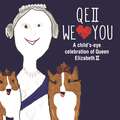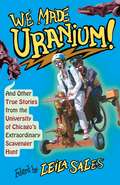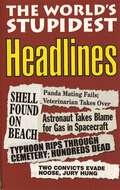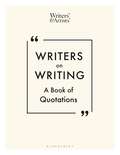- Table View
- List View
Humor in Global Contemporary Art
Pursuing a new and timely line of research in world art studies, Humor in Global Contemporary Art is the first edited collection to examine the role of culturally specific humor in contemporary art from a global perspective.Since the 1960s, increasing numbers of artists from around the world have applied humor as a tool for observation, critique, transformation, and debate. Exploring how humorous art produced over the past six decades is anchored in local sociopolitical contexts and translated or misconstrued when exhibited abroad, this book opens new conversations regarding the functioning of humor and the ways in which art travels across the globe. With contributions by an impressive array of internationally based scholars covering six major continental regions, the book is organized into four distinct geographical sections: Africa and the Middle East, Asia and Oceania, South and North America, and Europe. This structure highlights the cultural specificity of each region while the book as a whole offers a critical perspective on the postcolonial, globalized art network.Reflecting on present-day processes of globalization and biennialization, which confront viewers with humorous art from a variety of cultures and countries, this book will provide readers with a culturally sensitive understanding of how humor has become vital to many contemporary artists working in an unprecedentedly interconnected world.
QEII We Love You: A Child's-eye Celebration of Queen Elizabeth II
Children answer questions about the Queen in this delightful tribute to our longest-serving monarch and celebration of the innocence of childhood.In September 2015 Queen Elizabeth became Britain's longest-reigning monarch, a position previously held by her great-great-grandmother, Queen Victoria. In this wonderful celebration of her reign, primary school children offer their charming and often hilarious views on the Queen, her life, her work and her corgis.Answering a variety of questions, such as 'What does the Queen do all day?', 'Where does the Queen like to go on holiday?' and 'What does the Queen like to watch on television?', children offer their insights into the Queen's life.Learn how she apparently likes to play with her corgis in the park, sit on her throne while reading the newspaper and drinking wine, watch all the soaps on TV and how she spends her working days waving to people and attending meetings. These entertaining and funny answers are accompanied throughout by the children’s highly imaginative drawings of the Queen.Published to coincide with this landmark occasion, this wonderful book is a tribute to our longest-serving monarch, and celebrates both her reign and the innocence of childhood.
Television Sitcom and Cultural Crisis (Routledge Advances in Television Studies)
This volume demonstrates that television comedies are conduits through which we might resist normative ways of thinking about cultural crises.By drawing on Gramscian notion of crisis and the understanding that crises are overlapping, interconnected, and mutually constitutive, the essays in this collection demonstrate that situation comedies do more than make us laugh; they also help us understand the complexities of our social world’s moments of crisis. Each chapter takes up the televisual representation of a modern cultural crisis in a contemporary sitcom and is grounded in the extensive body of literature that suggests that levity is a powerful mechanism to make sense of and cope with these difficult cultural experiences.Divided into thematic sections that highlight crises of institutions and systems, identity and representation, and speculation and futurism, this book will interest scholars of media and cultural studies, political economy, communication studies, and humor studies.
We Made Uranium!: And Other True Stories from the University of Chicago's Extraordinary Scavenger Hunt
Item #176: A fire drill. No, not an exercise in which occupants of a building practice leaving the building safely. A drill which safely emits a bit of fire, the approximate shape and size of a drill bit. Item #74: Enter a lecture class in street clothes. Receive loud phone call. Shout “I NEED TO GO, THE CITY NEEDS ME!” Remove street clothes to reveal superhero apparel. Run out for the good of the land. Item #293: Hypnotizing a chicken seems easy, but if the Wikipedia article on the practice is to be believed, debate on the optimal method is heated. Do some trials on a real chicken and submit a report . . . for science of course. Item #234: A walking, working, people-powered but preferably wind-powered Strandbeest. Item #188: Fattest cat. Points per pound. The University of Chicago’s annual Scavenger Hunt (or “Scav”) is one of the most storied college traditions in America. Every year, teams of hundreds of competitors scramble over four days to complete roughly 350 challenges. The tasks range from moments of silliness to 1,000-mile road trips, and they call on participants to fully embrace the absurd. For students it is a rite of passage, and for the surrounding community it is a chance to glimpse the lighter side of a notoriously serious university. We Made Uranium! shares the stories behind Scav, told by participants and judges from the hunt’s more than thirty-year history. The twenty-three essays range from the shockingly successful (a genuine, if minuscule, nuclear reaction created in a dorm room) to the endearing failures (it’s hard to build a carwash for a train), and all the chicken hypnotisms and permanent tattoos in between. Taken together, they show how a scavenger hunt once meant for blowing off steam before finals has grown into one of the most outrageous annual traditions at any university. The tales told here are absurd, uplifting, hilarious, and thought-provoking—and they are all one hundred percent true.
The World's Stupidest Headlines
This is an entertaining collection of the world's stupidest headlines, featuring over 300 examples of the most ludicrous headlines ever to be printed in newspapers throughout the world. At first glance they might seem perfectly reasonable, but on closer inspection their implied meaning can be something else entirely ... and it's not always pretty.
Writers on Writing: A Book of Quotations (Writers' and Artists')
Writers on Writing brings together a plethora of phrases, quotable lines, quips and putdowns about the writing process. Arranged in themes that follow the stages from idea to final publication and beyond, this little book of quotations brings together words of wisdom and withering wit from famous and infamous writers across the ages about their own work and that of fellow writers. Themes on the publishing process include: getting started, first drafts, agents, editing, publication day, book tours; and on different genres, forms and writing styles, such as plot, character, dialogue. Other topics covered are: rivals, censorship, writer's block, spelling, fame, money, plagiarism, and alcohol. The quotations are accompanied by their original source (where known), date and a short writer biographical note. ''A writer is a person who writes.'' John Braine ''Our book is found to be a drug, no man needs it or heeds it. In the space of a year our publisher has disposed but of two copies.'' Charlotte Brontë ''How rare, how precious is frivolity! How few writers can prostitute all their powers! They are always implying, 'I am capable of higher things'.'' E.M. Forster





